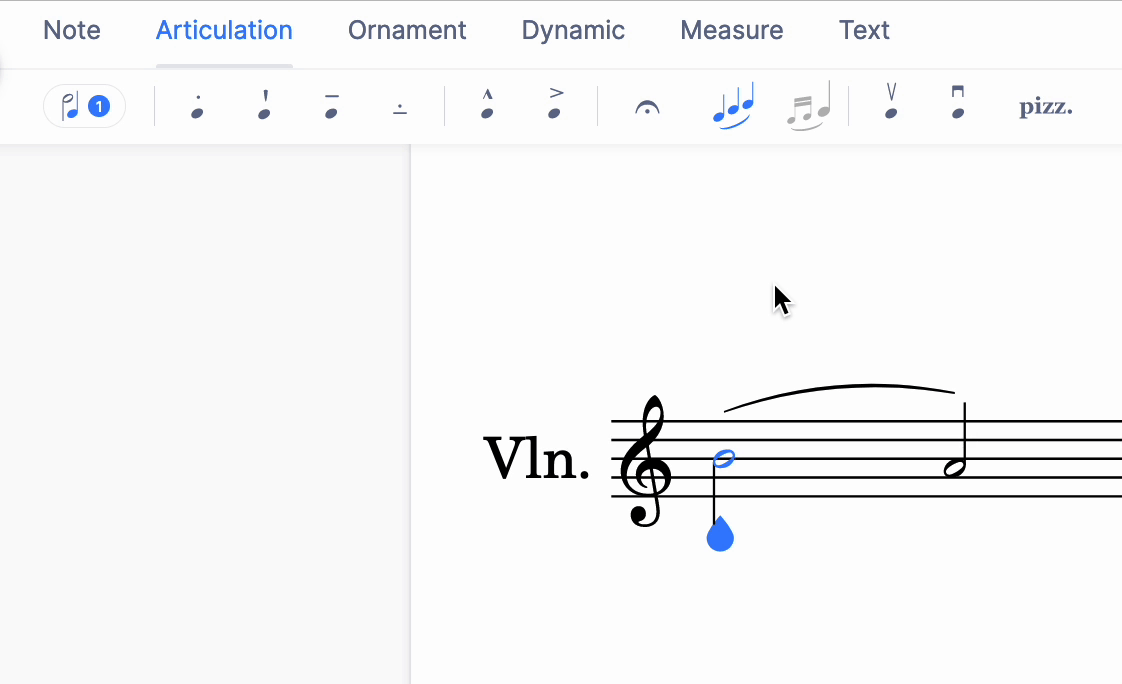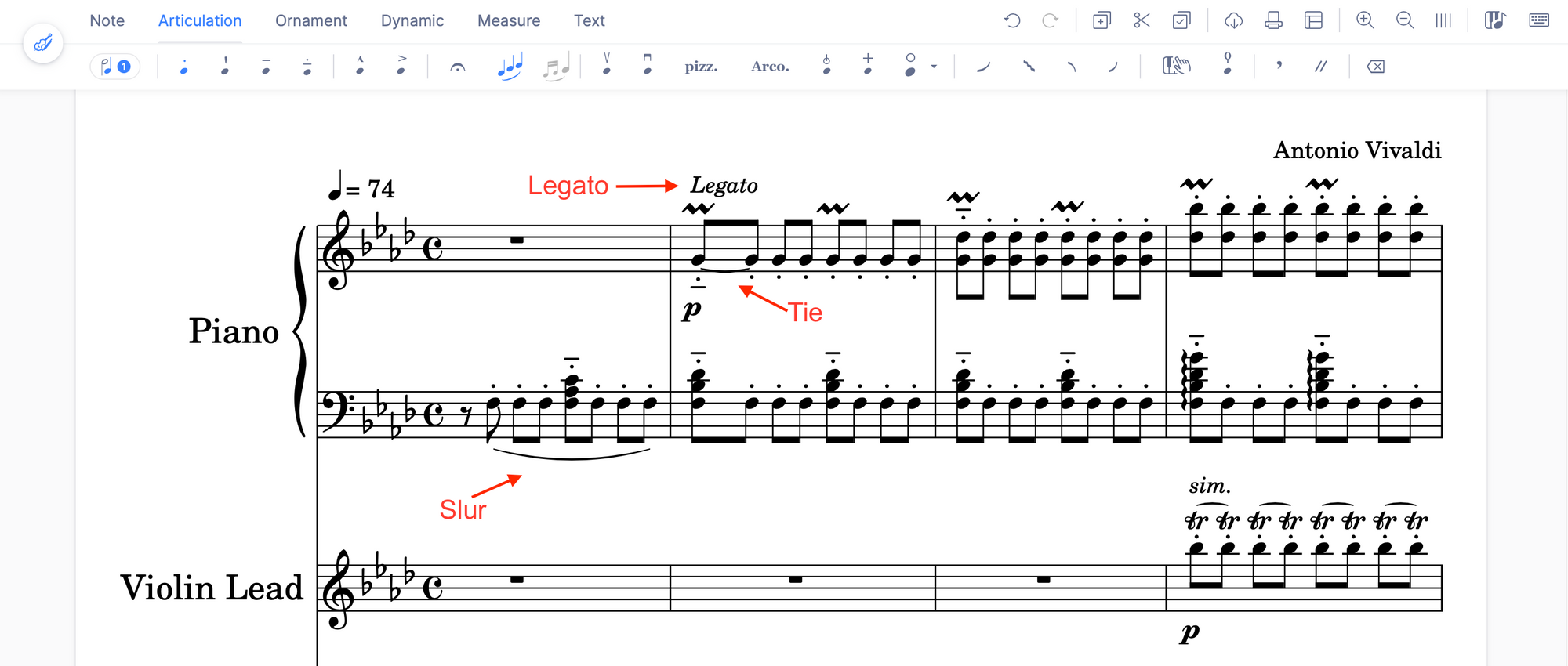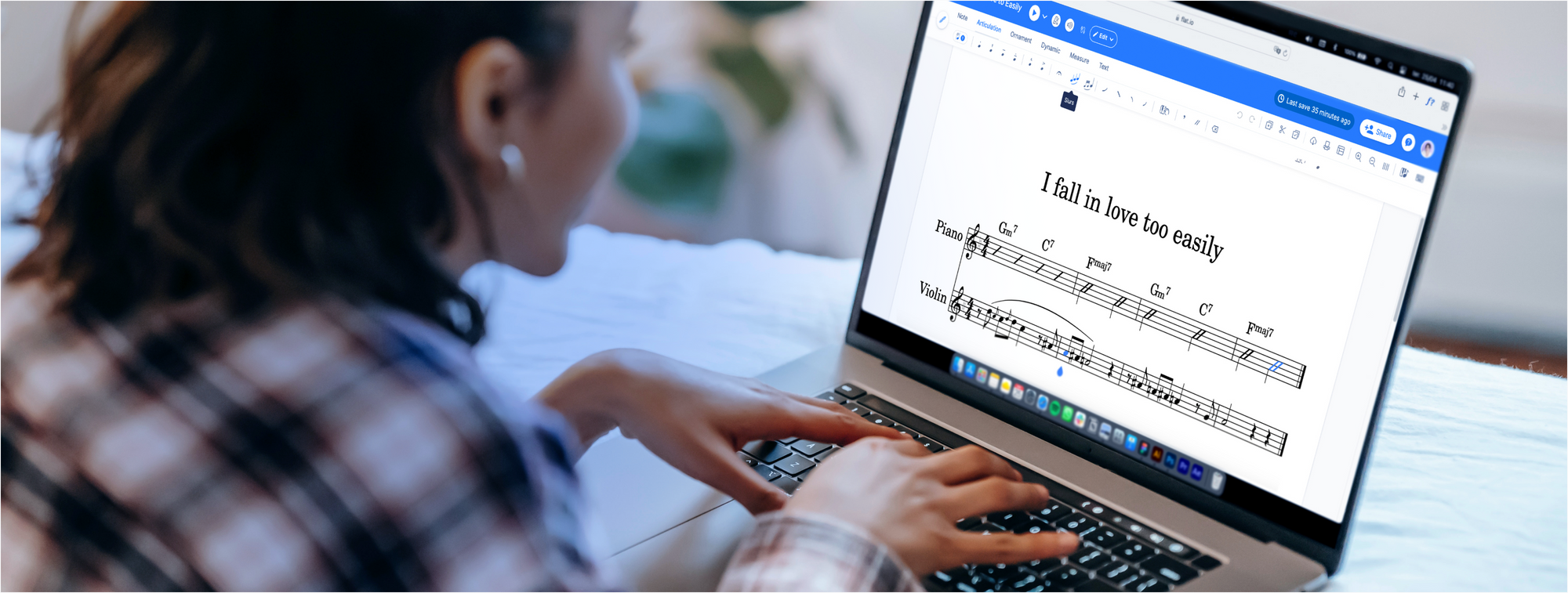Music notation is more than symbols — it’s a language of emotion. A single curved line can change the meaning of a melody, shaping how it breathes, moves, and feels. One of the most expressive marks in this language is the slur.
In this article, we’ll explore what slurs are, how they differ from ties and legato, their emotional impact, and how to teach them effectively in the classroom.

🎵 What Is a Slur in Music?
The slur is a curved line above or below a group of two or more notes of different pitches, specifying that the notes should be played smoothly, without any breaks in between.

💡Learn how to add a slur in Flat with this tutorial.
⚠️ The slur is shown above the notes if the stems are pointing downwards, and below the notes if the stems are pointing upwards.

Our Flip Slur feature will help you ensure that the slur marks in your music are correctly positioned on the staff. This feature is especially useful when working with complex pieces. Quickly adjust the position of these marks and make your scores look more polished and professional!

Before delving into the emotional effects of slurs and when or how to use them, let's review the difference between some concepts you may have heard of (and should know!): slurs, ties, and legato.
🎼 Slurs vs. Ties vs. Legato: What’s the Difference?
Sometimes you'll hear "slur," "tie," and "legato" used interchangeably when discussing notes, particularly if you are just starting to learn music theory. However, they are not the same thing. As you move forward, it's important to understand the differences in order to communicate effectively with other musicians, successfully translating your musical ideas into complete scores.
Slur
As mentioned before, a slur is a curved line that connects two or more notes of different pitches. This indicates that the notes under the slur should be played smoothly without stopping. In short, slurs indicate phrasing.
Tie
A tie is a curved line too, but it connects two or more notes of the same pitch. It means that the notes should be played as a single note with a duration equal to the sum of the tied notes. Ties are often used to extend the duration of a note.
💡Learn how to add a tie in Flat with this tutorial.
Legato
Legato is a term that means “smoothly” or “connected”. It is often indicated in sheet music by the word “legato”. Legato notes are often slurred.
💡In Flat you can insert an annotation to add the legato.
Thus a slur means that notes of different pitches should be played smoothly without stopping, a tie means that notes of the same pitch should be held for a longer duration, and legato means that certain notes should be connected and played smoothly.

🎻 The Emotional Effect of Slurs in Music
Slurs can be challenging to use effectively but they're definitely worth taking the time to learn since they can add a great deal of depth and nuance to a piece of music.
A slur creates a sense of phrasing and movement, which in turn produces a smooth and connected sound. But it's vital to consider the style and context of the piece, since the effect of a slur can change depending on the context.
🙋🏻 The slurs should be in line with the style and intention of the composer.
Examples:
- For slow, jazzy ballad, slurs can nurture a sense of sadness and longing.
- For a pop song you can dance to, slurs can give a sense of excitement and energy.
🧠 How to Practice and Master Slurs
Like any expressive element in music, mastering slurs takes practice.
Here are a few ways to start:
- Experiment with phrasing: Add or remove slurs to hear how your melody changes.
- Combine with dynamics: Try crescendos or decrescendos under slurred lines.
- Use playback in Flat: Listen carefully to how connected passages sound.
🚀 Practice adding and flipping slurs directly in your Flat score — it’s the fastest way to understand their visual and musical effect.
💡 Here are some guides that you might be interested in regarding using slurs in our platform:
And remember to seek out guidance and feedback from experienced musicians to improve your music composition skills. Consider joining our Discord server to interact with other users on the platform and grow as a composer.

👩🏫 Teaching Slurs in the Classroom
Teaching slurs helps students develop musical phrasing and emotional awareness — essential for expressive performance and composition. Here are a few classroom ideas:
1. Visualize the Connection
Have students draw slurs between musical phrases on their sheet music. Show how the curved line links ideas, not just notes.
2. Sing the Phrase
Ask students to hum or sing slurred passages, focusing on continuous airflow and smooth tone.
3. Compare with Staccato
Alternate slurred and detached phrases so students can hear and feel the difference between connected and separated articulation.
4. Practice with Flat for Education
Create short exercises on Flat for Education where students apply slurs digitally.
You can comment on their phrasing and give instant feedback — perfect for remote or in-class learning.
📘 Tip: Highlight specific measures in Flat and ask students to explain why they used (or didn’t use) a slur. It builds both theory and creative confidence.
👉 Try Flat for Education for free

So, if you want to master slurs, keep practicing, use all the resources at your disposal, learn from other musicians, and stay committed to your journey!
See you next time,
